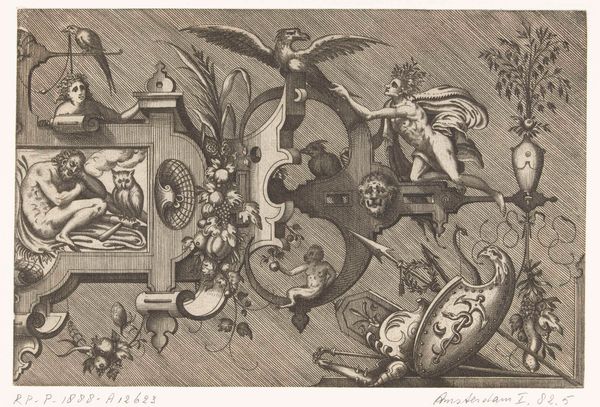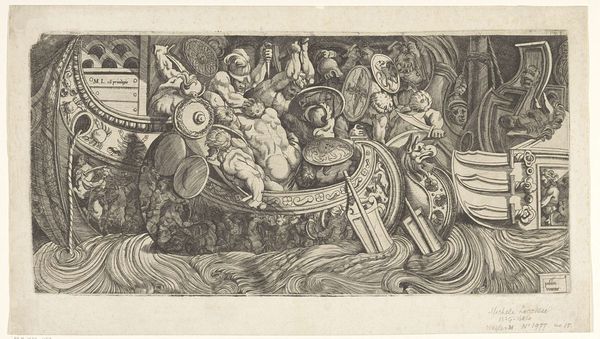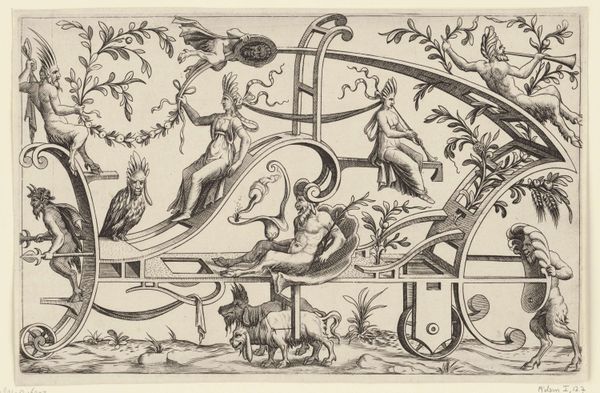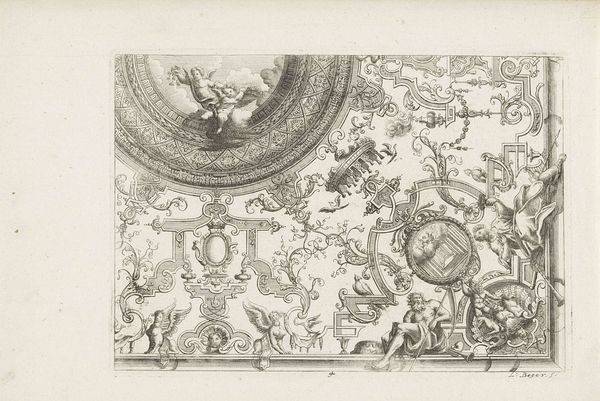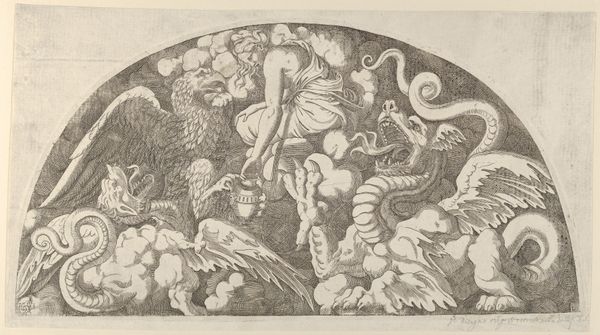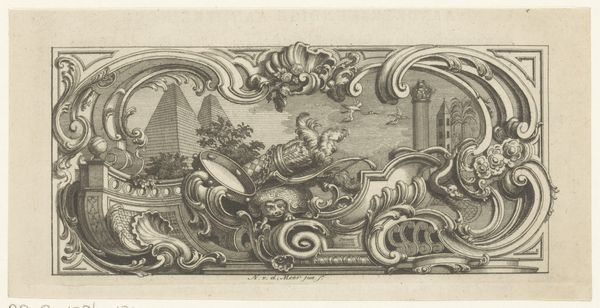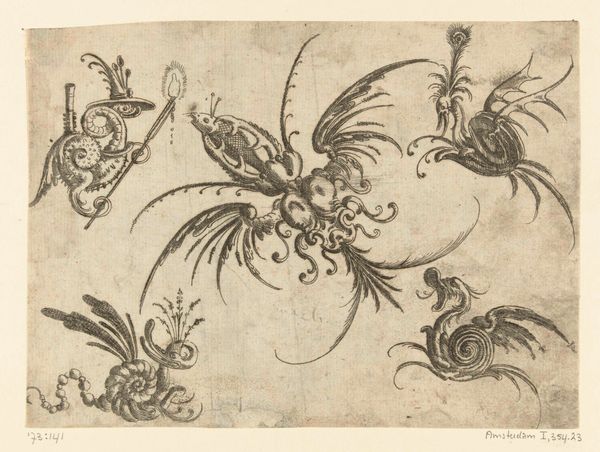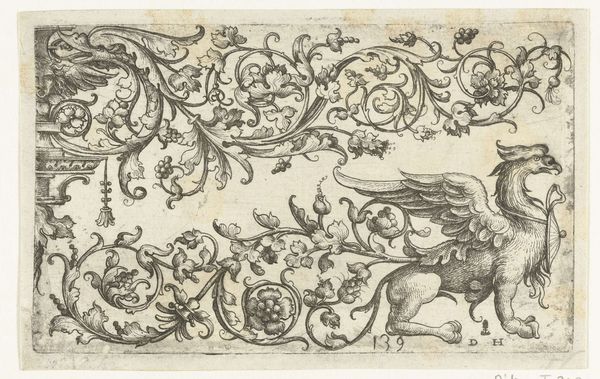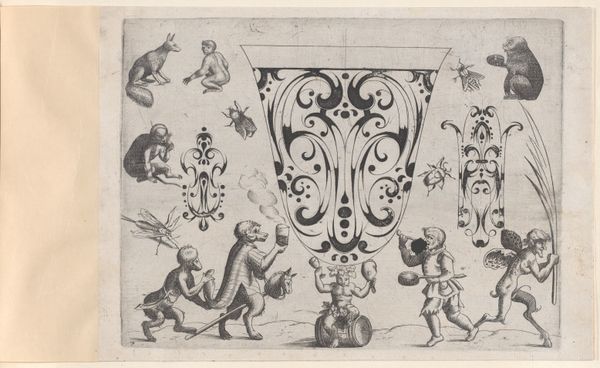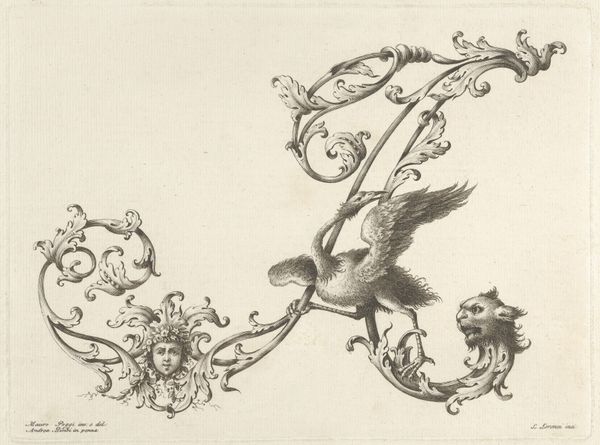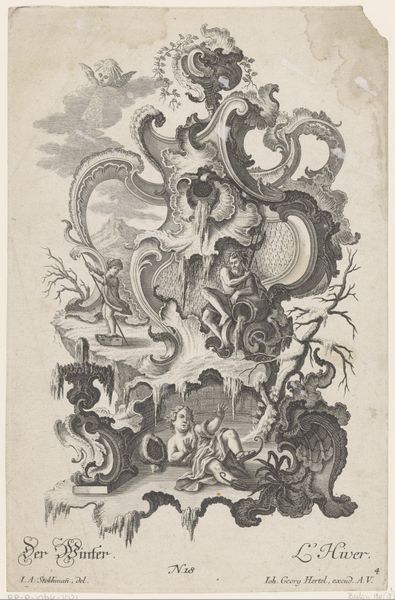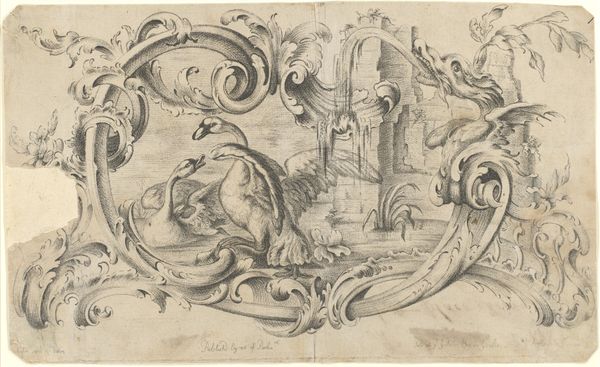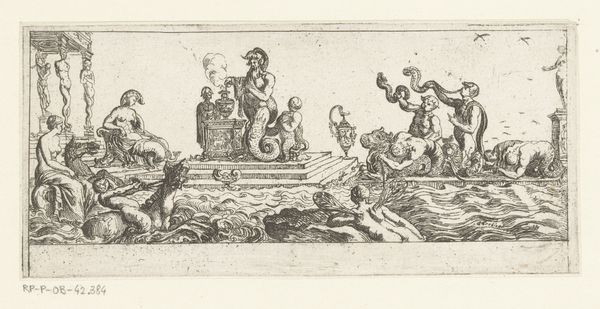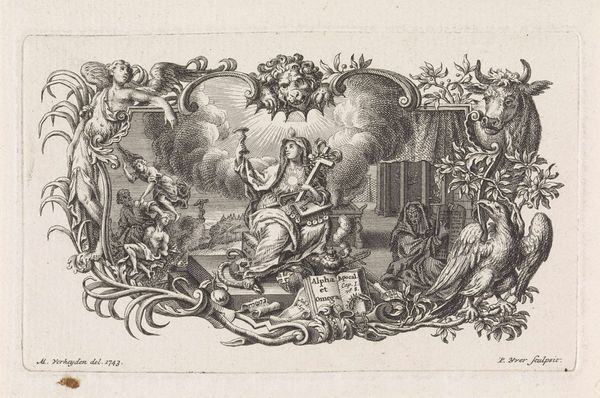
Dimensions: height 137 mm, width 203 mm
Copyright: Rijks Museum: Open Domain
Curator: At first glance, this piece evokes a kind of ornate exuberance, maybe even bordering on chaotic abundance. Editor: I agree. It's intricate! We’re looking at "Rechterhelft van een grote cartouche, met links een slang," or the Right Half of a Large Cartouche, with a Snake on the Left, an engraving made by Pieter van der Heyden in 1567. It resides here at the Rijksmuseum. Curator: A cartouche, for those unfamiliar, is essentially a decorative frame, often containing an inscription or emblem. And this one is teeming with figures and motifs. It looks like some of them represent elements of Baroque taste. Editor: Right. The piece comes out of a visual culture saturated with symbolism. You've got figures that seem to be lifted from classical mythology coexisting with these odd hybrid creatures. What statements do you see embedded in its presentation? Curator: Well, considering the period, the dense layering suggests a desire to impress. It speaks to power, to wealth, to knowledge. This almost overwhelming detail served to showcase status and refined sensibilities, maybe even alluding to classical teachings. Editor: Absolutely. And it’s not just about display. Look closer at the individual elements. The serpent, for example, is ambiguous. It can represent healing, or danger, depending on context, especially during the time of the Renaissance’s grappling with science and the fall from grace. The juxtaposed elements—birds and reptiles, symbols of military prowess mixed with fruits, it sets up interesting tensions. Curator: Exactly. It creates a visual dialogue that was very much en vogue. The arrangement creates symbolic links between abundance, military might, knowledge, and divine favour. It's not just decorative; it's a complex visual argument about order of society, or perhaps how one wants to see the order of the world. Editor: What I find most striking is how relevant these conversations around representation and power are. Even in this small segment of a larger design, we see the visual language through which ideologies get constructed and reinforced. Art provides a historical mirror. Curator: And a reminder of how much those languages endure. Delving into these works pulls back the curtain, even just a little, on the social and political conditions of the era, providing crucial context for those conversations. Editor: Exactly, understanding the intent and context encourages us to see how symbols from this cartouche may still show up today, just transformed. That’s what keeps this work fresh.
Comments
No comments
Be the first to comment and join the conversation on the ultimate creative platform.
